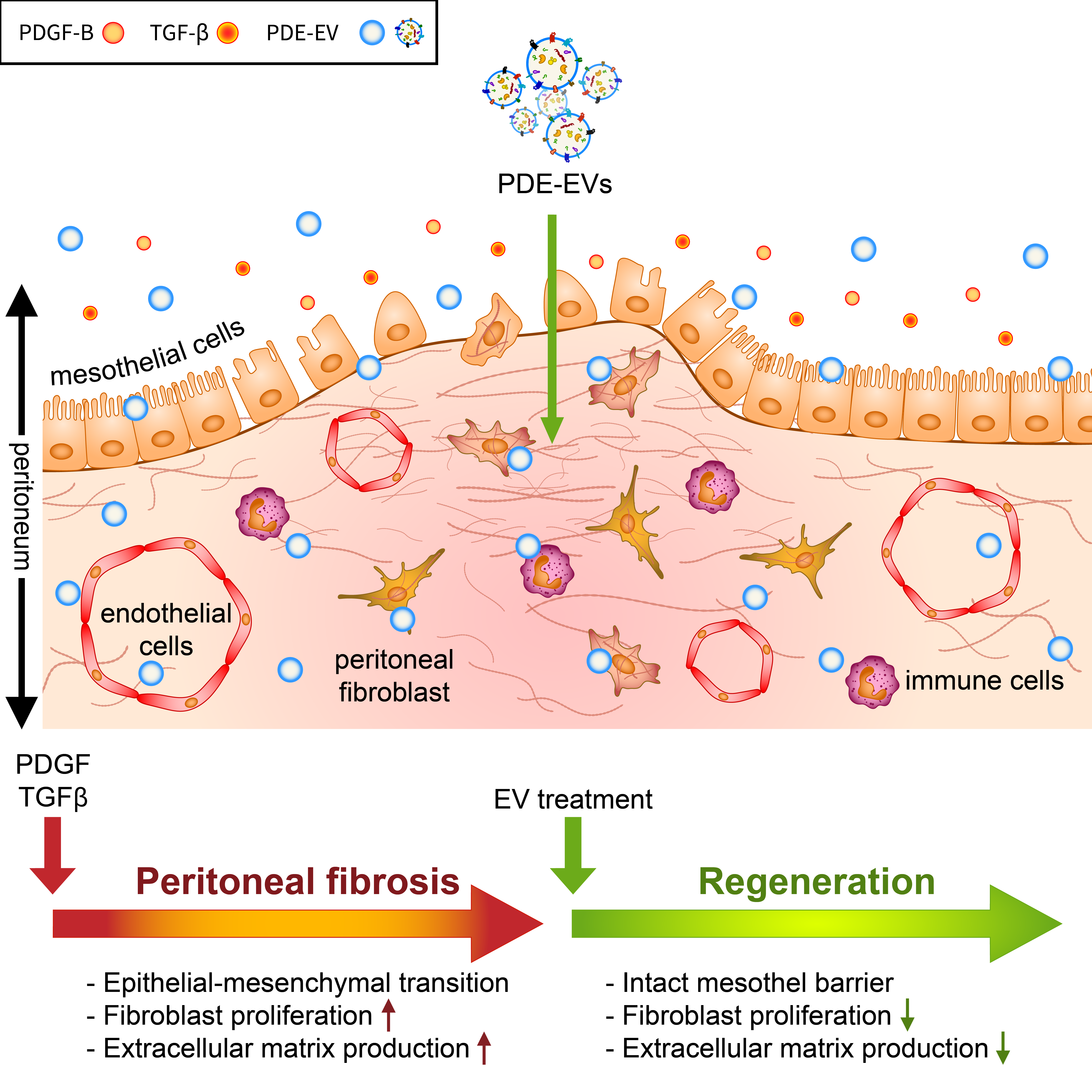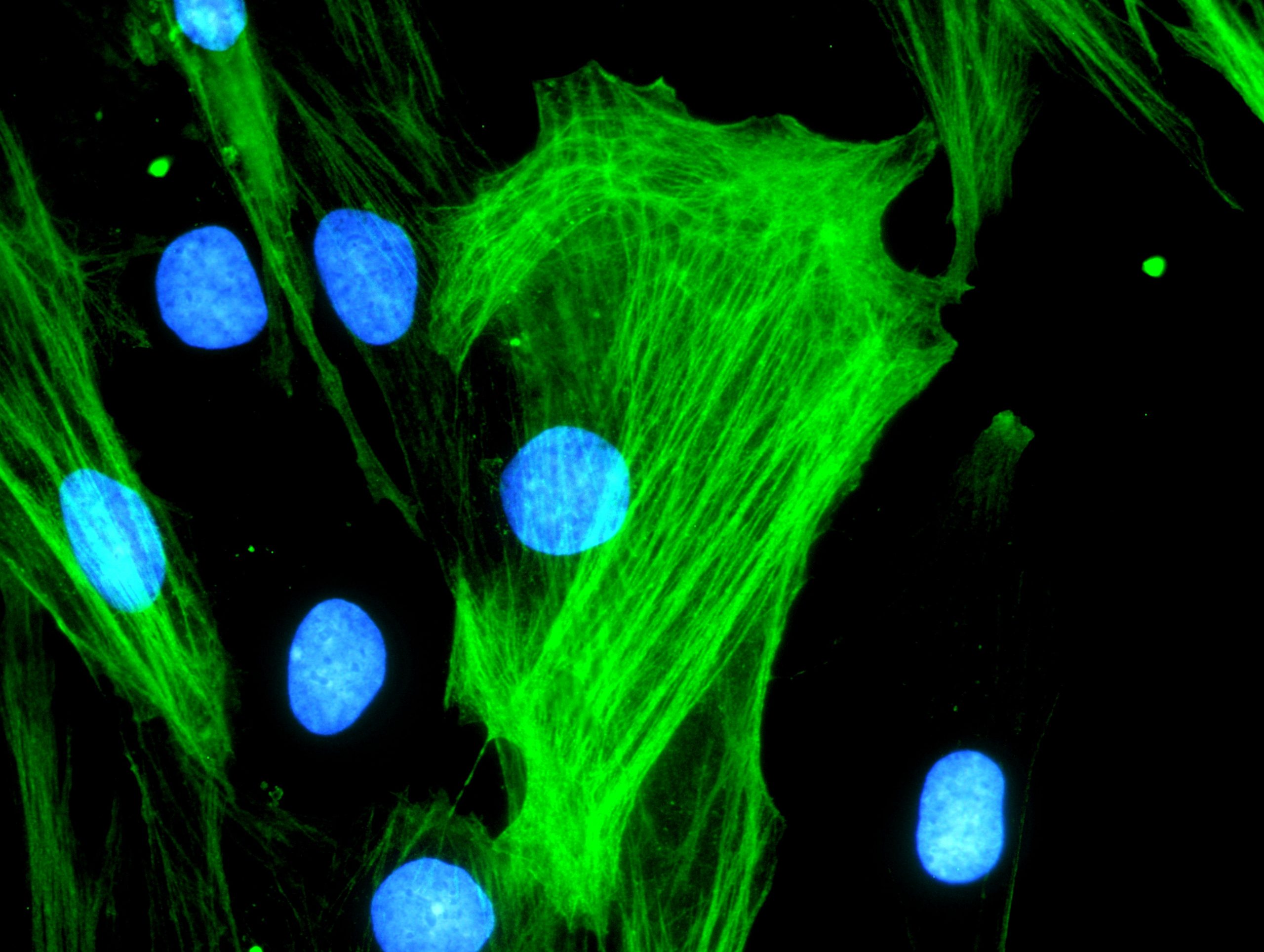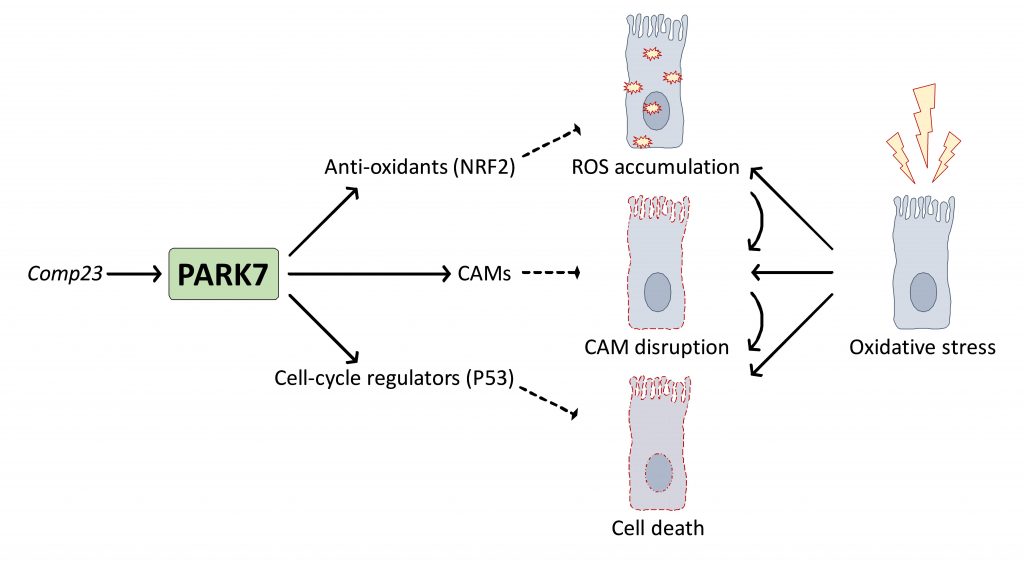WHAT IS FIBROSIS?
Fibrosis means a structural and functional alteration of a tissue, mostly developed on a basis of chronic inflammation. During the process independently from the aetiology, fibrosis shows similar cellular and molecular mechanisms. Injured cells and activated immune cells produce high amount of cytokines, chemokines and growth factors leading to the activation of fibroblasts. Fibroblasts are characterised by increased proliferation and decreased apoptosis rate, high motility, and the ability to produce extracellular matrix components, which are the non-cellular part of scar tissue. The excessive accumulation of extracellular matrix dramatically alters the architecture of the tissue, therefore reduces its functionality causing organ failure and high mortality.
According to some estimates, 45% of deaths can be attributed to fibrosis in the developed countries. Despite the indisputable medical need, there is no effective therapy against fibrosis.
Examples for fibrotic diseases
Idiopathic pulmonary fibrosis (IPF) is the most aggressive form of interstitial pneumonias resulting in severe respiratory failure and high mortality rate. IPF affects 3 million people worldwide. The aetiology of IPF is unknown, however smoking, infections and genetic variants has been described as risk factors. The progression of IPF is very rapid, even a five-year survival rate can only be reached by lung transplantation. IPF is the only fibroproliferative disease that can be treated with FDA-approved antifibrotic drugs. Although nintedanib or pirfenidone are able to slow down the disease progression, their beneficial effect on long term organ/lung function and survival is insufficient.
The prevalence of chronic kidney disease (CKD) is estimated to be 8-16% worldwide, and is rapidly increasing. The key risk factors of CKD are the chronic „diseases of civilization” including hypertension, diabetes mellitus and autoimmune diseases, but acute kidney injury can also lead to long-term renal damage. CKD is characterized by the excessive deposition of extracellular matrix and gradual loss of kidney function over time. Severe CKD requires renal replacement therapies, like dialysis or kidney transplantation.
Inflammatory bowel disease (IBD) is a chronic inflammatory disorder of the gastrointestinal tract of genetically susceptible individuals. The main forms are colitis ulcerosa and Crohn’s disease. IBD is characterized by impaired mucosal remodeling, leading to intestinal ulceration or fibrosis. The increased submucosal accumulation of extracellular matrix leads to decreased intestinal motility, malabsorption and in severe cases critical narrowing of the lumen. Half of the IBD patients need one or more surgical intervention over their lifetime.
Peritoneal dialysis (PD) is a widely used method of kidney replacement therapy, which is successfully applied to treat both acute and chronic kidney diseases (CKD). During PD, peritoneal mesothelial cells are exposed to a variety of insults, including glucose, uremic toxins and chronic inflammation. As a result of long-term PD treatment, the structure of the peritoneum changes through the decrease of the number of mesothelial cells, thickening of the mesothelial layer and occurring peritoneal fibrosis accompanied by changes in the structure and number of blood- and lymphatic vessels. These pathologic changes are closely associated with the main clinical characteristics observed in long-term PD patients, namely the increased peritoneal solute transport rate and decreased ultrafiltration capacity.
Our main topics
Parkinson disease 7 (PARK7) is a multifunctional protein, which was primarily investigated in connection with neurodegenerative diseases, including Parkinson’s disease, Alzheimer’s disease or ischemic stroke. However, the possible biological role of PARK7 was suspected in other diseases with inflammatory and fibroproliferative processes as well.
PARK7 can exert its cytoprotective role through its antioxidant, antiapoptotic, enzymatic, chaperon or transcriptional- and signal transduction regulatory effects.
We demonstrated, that pharmacological activation of PARK7 has a beneficial effect against oxidative damage and inflammation of various organs, including the kidney or the intestines.
Extracellular vesicles (EVs) are a heterogeneous population of biological particles released by any cell types. The main function of EVs is to convey information via the molecular content of their cargo. Several studies have suggested that EVs may be mediators of inflammation, immunosuppression and tissue regeneration. Our investigations focus on the biological role of EVs on the activation and behaviour of fibroblasts.

Interleukin 24 (IL-24) is a member of IL-20 cytokine subfamily, which was primarily investigated in connection with immunoregulation and tumor progression. Involvement of IL-24 was suggested in inflammatory diseases associated with abnormal tissue remodeling.
Recently, our research group demonstrated that IL-24 plays a significant role in the mechanism of tissue remodeling in the intestine and kidney. The pro-fibrotic effect of IL-24 originates from its direct fibroblast activating effect and the ability to induce the expression of pro-fibrotic growth factors in epithelial cells.
Platelet derived growth factor (PDGF) is a well-known pro-fibrotic protein which plays an important role in fibroblast proliferation. PDGF exerts its biological effect through its tyrosine kinase receptors (PDGFR). Based on previous preclinical literary data, blocking the PDGF pathways may have a significant antifibrotic outcome.
Our research group focuses on preclinical screening and optimatisation of small-molecule kinase inhibitors targeting PDGFR-B.


